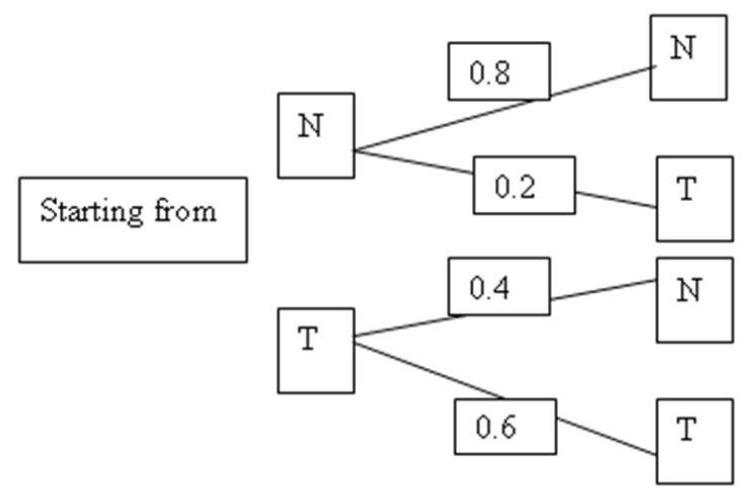True/False
Newsweek and Time are two competing, weeklies each of which tries to keep their readership while at the same time trying to get the other's readers to switch. Among all the households holding yearly subscriptions to Newsweek or Time (but not both), let and denote the states that a household is a current Newsweek or Time subscriber, respectively. The probabilities of switching from one state to the other after one transition (when they renew) are given by the tree diagram. (For simplicity, it may be assumed that all annual subscriptions expire on December 31st and are renewed by all of them for one or the other but not both magazines for one year.) If the current number of households subscribing to Newsweek and Time is 8000 and 4000, respectively, Newsweek would have a larger number of subscribers in the long run.

Correct Answer:

Verified
Correct Answer:
Verified
Q8: Joe Smith, a loyal lessee of American
Q9: XYZ Inc. hires only retired people
Q10: Jim Cramer, a stock analyst, models the
Q11: Short term behavior of a Markov system
Q12: Judy Jones purchases groceries and pop exactly
Q14: Judy Jones purchases groceries and pop exactly
Q15: In Markov chains having absorbing states and
Q16: The columns of the transition probability matrix
Q17: XYZ Inc. hires only retired people
Q18: The states in a Markov system are